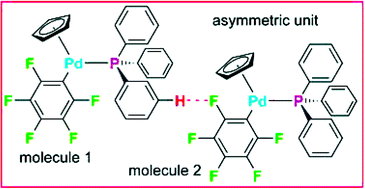Can a single C–H⋯F–C hydrogen bond make a difference? Assessing the H⋯F bond strength from 2-D 1H-19F CP/MAS NMR†
Abstract
Contrary to common belief a single C–H⋯F–C contact in [(η5-C5H5)Pd(C6F5)(PPh3)] is strong enough to pair two independent molecules and render them crystallographically different as suggested by its strongest 1H–19F dipole–dipole coupling in a 2-D CP/MAS PILGRIM


 Please wait while we load your content...
Please wait while we load your content...